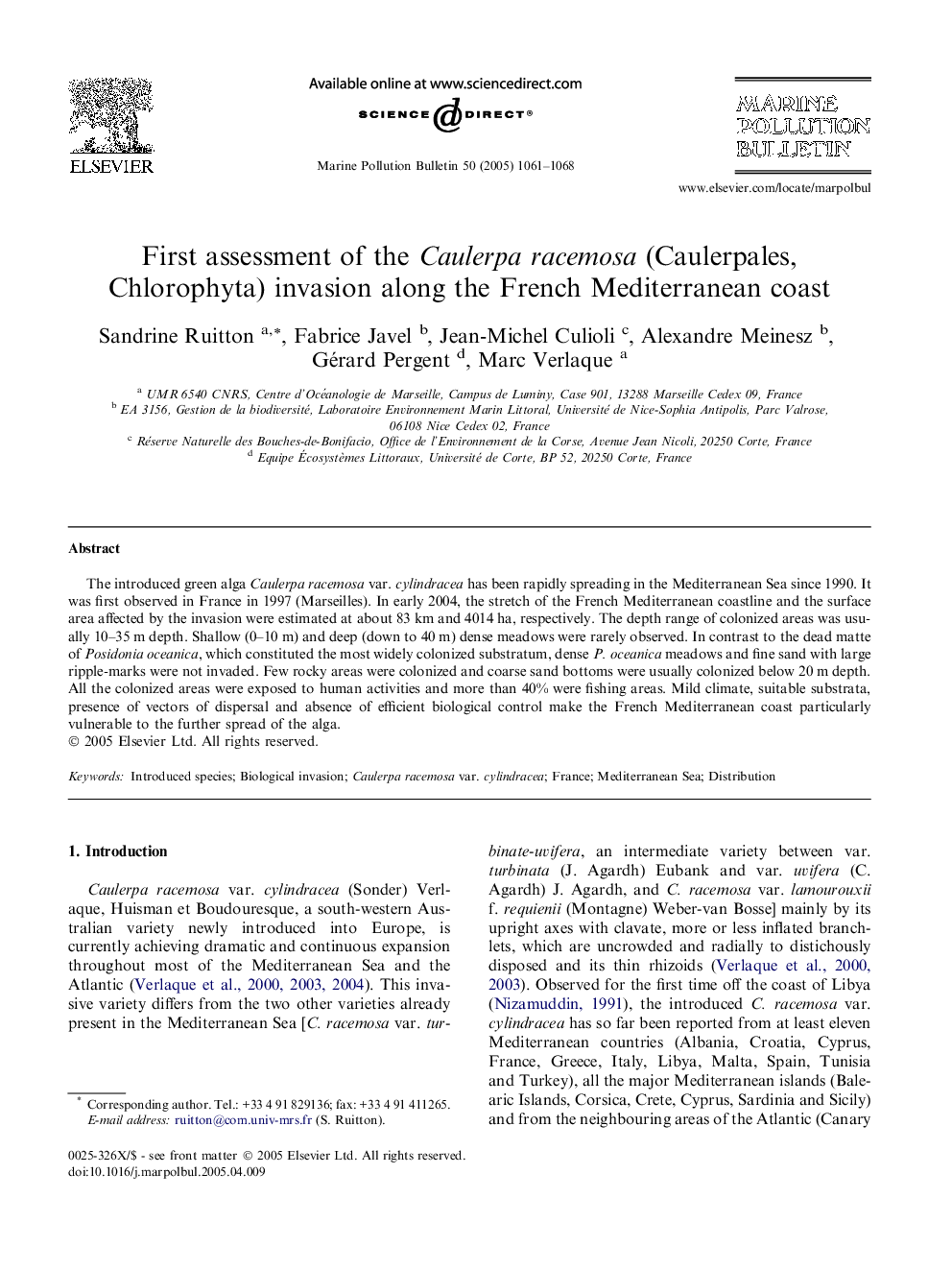| Article ID | Journal | Published Year | Pages | File Type |
|---|---|---|---|---|
| 9466093 | Marine Pollution Bulletin | 2005 | 8 Pages |
Abstract
The introduced green alga Caulerpa racemosa var. cylindracea has been rapidly spreading in the Mediterranean Sea since 1990. It was first observed in France in 1997 (Marseilles). In early 2004, the stretch of the French Mediterranean coastline and the surface area affected by the invasion were estimated at about 83Â km and 4014Â ha, respectively. The depth range of colonized areas was usually 10-35Â m depth. Shallow (0-10Â m) and deep (down to 40Â m) dense meadows were rarely observed. In contrast to the dead matte of Posidonia oceanica, which constituted the most widely colonized substratum, dense P. oceanica meadows and fine sand with large ripple-marks were not invaded. Few rocky areas were colonized and coarse sand bottoms were usually colonized below 20Â m depth. All the colonized areas were exposed to human activities and more than 40% were fishing areas. Mild climate, suitable substrata, presence of vectors of dispersal and absence of efficient biological control make the French Mediterranean coast particularly vulnerable to the further spread of the alga.
Keywords
Related Topics
Physical Sciences and Engineering
Earth and Planetary Sciences
Oceanography
Authors
Sandrine Ruitton, Fabrice Javel, Jean-Michel Culioli, Alexandre Meinesz, Gérard Pergent, Marc Verlaque,
